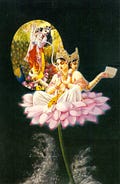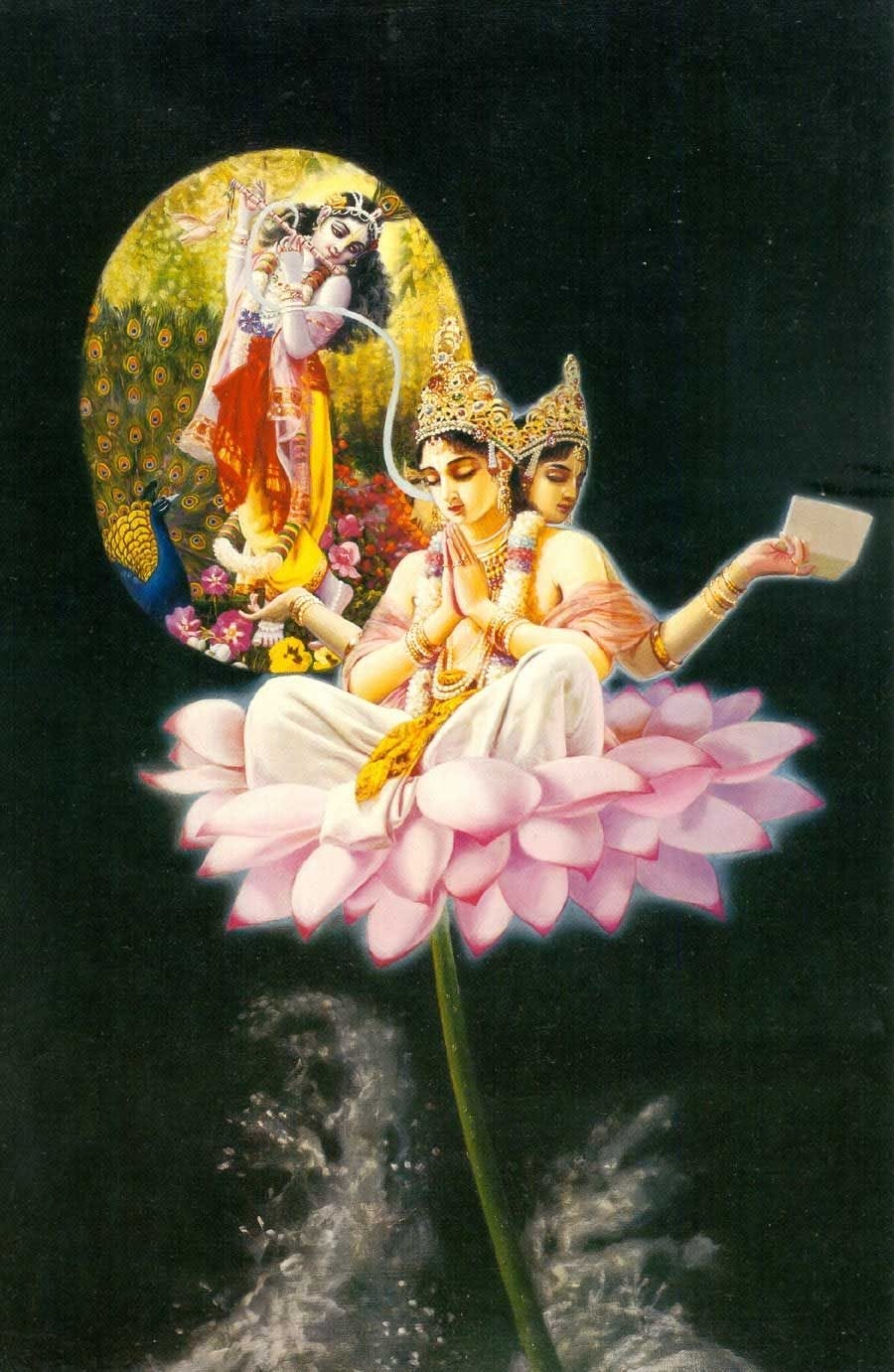Full Course: Second canto of Srimad Bhagavatam
The second canto includes descriptions of the universal form, the meeting of Brahma with the Lord, the process of creation and a synopsis of the teachings of the Srimad Bhagavatam.
The second canto of Srimad Bhagavatam is called “The Cosmic Manifestation” because there are lots of explanations about the structure of the Universe and the process of creation, topics that will be further deepened in the following cantos. Because each canto brings knowledge that is suitable for the level of understanding of the reader, we may notice that often the same topic is repeatedly explained in several cantos, but with different details, combined with other topics that help us to deepen our understanding of the first. This may sound confusing for contemporaneous readers, who would expect a book to speak about everything connected with one topic before passing to the next, but this is a scientific system for conveying transcendental knowledge.
This first chapter in the second canto is called “The First Step in God Realization” because it includes an explanation of meditation in the universal form, which allows us to see the Lord everywhere.
At the end of the first canto, Pariksit Maharaja asked about the way of perfection for all persons, especially for one who is about to die. What should a person hear, chant, remember, and worship? What should he not do? The answer to this question is the process of pure devotional service to the Lord, which was already hinted at in the first canto. Sukadeva Goswami starts his answer by revealing that the answer to this question is the prime subject matter for hearing, and it is approved by all.
In this course, we will go deep into the meaning of all the 12 cantos of the Srimad Bhagavatam. Here we have the complete course on the second canto, including text, the PDFs, and the lessons in both audio and video format:
_
Srimad Bhagavatam #12: The first step in God-realization (chapter 2.1)
After Pariksit Maharaja presented his questions before Sukadeva Goswami, the great sage started to reply. In the first canto, Suta Goswami answers the questions of Saunaka Rishi, while in the second canto, the Same Suta Goswami narrates the conversation between Sukadeva Goswami and Maharaja Pariksit.
In the first canto, Vyasadeva started his recitation with the words “oṁ namo bhagavate vāsudevāya”, offering his respects to the Supreme Lord. Now, in the second canto, Sukadeva Goswami starts his recitation by uttering the same words. The word “Bhagavan” can sometimes be used in relation to an ordinary powerful person, but Vāsudevāya makes it clear who is being addressed, “Kṛṣṇa, the son of Vasudeva”.
_
Srimad Bhagavatam #13: The Lord in the Heart (chapters 2.2 and 2.3)
At the end of each day of Brahma, the universe is partially destroyed and has to be recreated at the beginning of the next day. From the scriptures, we learn that although Brahma is very powerful, he is a living being, just like us. The soul inside the body of Brahma is not different from the soul in the body of an ant. How come Brahma can be so powerful to the extent of creating an entire universe, while the ant can just lift a grain of sugar?
_
Srimad Bhagavatam #14: The process of creation (chapters 2.4 and 2.5)
After hearing the words of Saunaka Rsi, Suta Goswami continued his description of the discussion between Sukadeva Goswami and Maharaja Parikisit, answering the question the Rsi asked in verse 2.3.13 (What did Mahārāja Parīkṣit again inquire from him after hearing all that he had said?).
To answer the question of Maharaja Pariksit, Sukadeva Goswami goes back in time, to the beginning of the current day of Brahma, and narrates an ancient conversation between Narada Muni and Lord Brahma that describes the creation of the universe, and debunks the idea that everything appears by chance. Everything has a cause, just like the cause of a car is the car factory, the cause of the universe is the Supreme Lord, acting through His potencies.
_
Srimad Bhagavatam #15: The Lord is the cause of all causes (chapters 2.6 and 2.7)
Being present inside each universe as Gabodakasayi Vishnu and Ksirodakasayi Vishnu, the Lord is the foundation upon which the whole material creation rests. Everything is created and maintained by His energy. The Lord is thus called the virat-purusha, the enjoyer of the cosmic manifestation, since everything is generated from His energy, and ultimately everything exists to satisfy Him.
In the first chapter, it was mentioned that Lord Brahma meditated in the universal form, the virat-rupa, to remember how to create the universe. As we also studied, there are two processes of creation: the primary creation, performed by Lord Maha-Vishnu, and the secondary creation, performed by Lord Brahma. The universal form exists even before the creation of the universe as part of the primary creation, a concept or model that guides the creation of Brahma. By meditating in this form, Brahma obtained all the necessary knowledge to recreate the universe the way it was before.
_
Srimad Bhagavatam #16: Lord Brahma sees the Lord (chapter 2.8)
In the previous chapters, Brahma described the process of creation, described the glories of the Lord, and revealed that devotional service unto Him is the ultimate goal of life. In the end, he asked Narada Muni to expand this description and teach it to others. This is a very ancient conversation that happened at the beginning of the day of Brahma, more than two billion years ago. Since then, Narada Muni has been traveling and speaking about devotional service.
_
Srimad Bhagavatam #17: Srimad Bhagavatam is the answer for all questions (chapters 2.9 and 2.10)
In the previous part, we studied the meaning of the Catuh-sloki Bhagavatam, the four original verses that Krsna spoke to Brahma in answer to his four questions. After receiving these instructions from the Lord, Brahma began to re-create the universe, as it was previously. Brahma doesn’t create the universe according to his whims, but according to the project conceived by the Lord. In this way, the universe is always created in the same way, in a renewed state. The material energy is never transformed into something else, but it is permutated, or rearranged in the form of the material creation. When the universe is destroyed, the material energy returns to its original state, just like a bunch of Lego blocks that can be assembled into different toys and later disassembled. In this way, the same material energy can be reused eternally in the different cycles of creation, which are in turn connected with the breath of Lord Maha-Vishnu.
_




